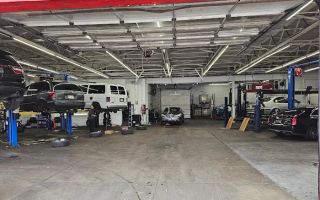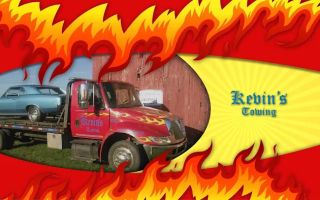How to tell if your tire tread is worn out and causing problems
As a car owner, one of the most important things to keep an eye on is the condition of your tires. The tread on your tires plays a vital role in ensuring that you maintain proper traction, especially in difficult road conditions like rain or snow. Without a good tire tread, your car's handling can become compromised, which can lead to dangerous situations on the road. But how do you tell if your tire tread is worn out and causing problems? Let’s dive into the signs you need to look for and how to check if your tires need attention.

MR. TIRE INC.
2078 New York Ave, Huntington Station, NY 11746, USA
1. Why Tire Tread Is Important
Before we get into the signs of worn-out tread, it's crucial to understand why tire tread matters so much. Tire tread refers to the grooves on the surface of your tires that make contact with the road. These grooves are designed to channel water away from the tire and increase friction, which helps maintain grip on the road. When your tread becomes too worn down, these grooves lose their effectiveness, reducing the tire’s ability to grip the road, especially in wet conditions.
In extreme cases, worn-out tire tread can lead to tire blowouts, hydroplaning, and a significant loss of control over the vehicle. That’s why it’s so important to monitor the tread depth of your tires and replace them when necessary.

MR. TIRE INC.
2078 New York Ave, Huntington Station, NY 11746, USA
2. How to Check Your Tire Tread
There are several simple methods you can use to check the condition of your tire tread. Let’s explore the most common and effective ones:
2.1 The Penny Test
One of the easiest ways to check if your tire tread is worn out is by using a penny. To perform the penny test, take a penny and place it into the tire's grooves with Abraham Lincoln’s head facing down into the tread. If the tread covers any part of Lincoln’s head, your tread is still at a safe depth. However, if you can see the top of his head, that means the tread is too shallow, and it’s time to replace the tire.
2.2 The Tread Wear Indicator
Many tires are equipped with built-in tread wear indicators. These are small bars of rubber that sit in the tread grooves. When the tread wears down to the same level as the wear indicator, it’s a clear sign that the tire needs to be replaced. This indicator makes it incredibly easy to spot if the tread has reached a dangerous level.
2.3 Visual Inspection
Sometimes, just looking at your tires can give you a good idea of their condition. Take a close look at the tread pattern. If you notice that the grooves are becoming shallow or if there are bald spots, it's a sign that the tire tread is worn out. Uneven tread wear can also indicate an alignment issue, which should be addressed immediately to avoid further damage.
3. Warning Signs of Worn-Out Tread
In addition to the methods mentioned above, there are a few warning signs that your worn-out tires might be causing problems while driving:
3.1 Reduced Traction
If you start noticing that your car struggles to grip the road, especially during rainy or snowy conditions, your tire tread may be too worn. Reduced traction can cause your car to slide or skid, which significantly increases the risk of an accident. If you notice this, it’s crucial to check your tire tread immediately.
3.2 Longer Stopping Distances
Worn-out tire tread can also affect how long it takes your car to come to a complete stop. When your tires no longer have enough grip on the road, it can increase your stopping distance. If you find yourself taking longer to stop, it may be a sign that your tire tread is no longer functioning at its best.
3.3 Vibration or Noise
As the tread wears down, you may start hearing a humming or thumping noise while driving. This can be especially noticeable at higher speeds. You may also feel vibrations in the steering wheel or the seat, which can indicate that your tires are unevenly worn or that they no longer provide smooth traction.
4. How Worn Tire Tread Affects Your Safety
Worn-out tire tread can seriously compromise your safety on the road. When the tread is too shallow, your tires won’t be able to channel water effectively, which increases the risk of hydroplaning in wet conditions. Additionally, tires with insufficient tread may not provide the necessary traction when driving on icy or snowy roads, putting you at risk of losing control.
Driving on bald or worn tires can also put additional strain on your car’s suspension system, leading to further issues down the road. For these reasons, it’s essential to replace your tires as soon as the tread has worn down to an unsafe level.
5. What to Do If Your Tread Is Worn Out
If you've determined that your tire tread is worn out, the next step is to take action. Here’s what you can do:
5.1 Replace the Tires
The most straightforward solution is to replace the tires. Depending on how worn your tread is, it may be time for a full set of new tires. If only one or two tires are worn, it’s generally recommended to replace them in pairs to ensure even performance.
5.2 Get an Alignment Check
If your tires are wearing unevenly, it may be a sign of alignment or suspension issues. In this case, it's important to have your car’s alignment checked by a professional. Correcting the alignment can help prevent uneven wear in the future and extend the lifespan of your new tires.
5.3 Regular Tire Maintenance
To prevent your tires from wearing out prematurely, it’s important to keep up with regular tire maintenance. This includes rotating your tires every 6,000 to 8,000 miles, checking tire pressure regularly, and ensuring that your alignment is correct. Proper tire care can help you get the most out of your tires and ensure that your car stays safe on the road.
6. Conclusion
Your tire tread is one of the most important factors in keeping you safe on the road. By knowing how to check your tire tread and recognizing the warning signs of worn-out tires, you can avoid accidents and ensure that your car is always roadworthy. If you notice that your tires are worn down, don’t delay in replacing them. Your safety depends on it.
Rescue & Towing offers expert roadside assistance services, including tire replacement and car recovery. Click the link for more information and to ensure your vehicle is always ready for the road.























